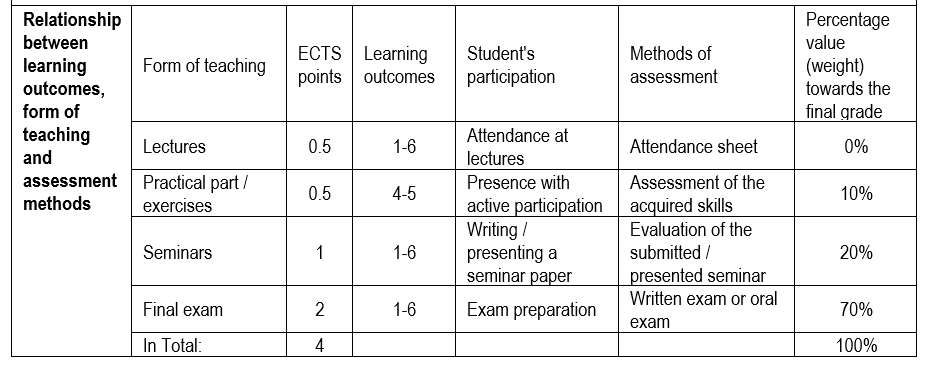Module 1. Students will learn about most often types of tumour diseases with the emphasis on tumours in the head and neck area.
Module 2. Students will learn about ear diseases, nose and paranasal sinuses, pharynx, throat, and basic pathological processes in the neck area, with the causes of hearing and balance disorders. They will learn about independent procedure in some state of emergency in the field of otorhinolaryngology. During the practices they will learn the techniques of otorhinolaryngology examination, treatment of otorhinolaryngology patients, and will apply the gained knowledge in contact with the patient.
Module 3. Knowing of often basic eye diseases, especially the one that are in certain way connected to the orbital diseases and paranasal sinuses, i.e. the ones which are caused by the process that is common to ophthalmology and dental medicine. Independent work in certain state of emergency in ophthalmology that can occur during the work of Doctor of Dental Medicine. The whole patients’ treatment without narrow focus on the certain disease.
Module 1. Epidemiological and tumour biology, general principles of oncology, causes and flow of the disease, and clinical signs of most common types of tumours with the emphasis on tumour of head and neck. Possibilities of early detection and diagnostic procedures of detected tumour diseases. Basic modes of multidisciplinary treatment (surgery, radiology, systematic treatment) and life quality assurance (analgesia).
Module 2. Frequency, disease causes, disease flow, clinical signs and disease symptoms in the ear area, nose and paranasal sinuses, pharynx, throat, and neck. Congenital anomalies, injuries, inflammation, and tumours in these areas. Diagnostic processes for detection of mentioned pathological states and possible treatment modes, including the emergency medical treatment. Connection between dental medicine and other professions in the neighbouring regions.
Module 3. Functional eye system (sight and ocular motor skills), symptoms and signs of eye diseases, classification of eye diseases, path to ophthalmic diagnosis, chosen state of emergency in ophthalmology, chronic eye diseases, eye complications and other diseases.
Required course materials:
- Vrdoljak, E.; Petković, M.; Pleština, S. Gugić, D., Klinička onkologija, Medicinska naklada, Zagreb, 2012.
- Bumber, Katić, Nikšić-Ivančić, Pegan, Petric, Šprem i suradnici: Otorinolaringologija, Naklada Ljevak, 2004
- Oftalmologija,Krešimir Čupak,Nikica Gabrić,Branimir Cerovski i sur.,Nakladni zavod Globus,Zagreb 2004.
Upon completion of this course, students will be able to:
1 to recognise and list risk factors for head and neck tumors and to describe epidemiological characteristics of head and neck tumors
2 to recognize symptoms and signs of local and regional spread of tumor disease
3 to Support and valorize head and neck tumor prevention programs
4 to identify, describe, compare and explain the symptoms and signs of the most common conditions and diseases in otorhinolaryngology and ophthalmology
5 to list, describe, compare and select an appropriate diagnostic procedure and treatment in otorhinolaryngology and ophthalmology
6 to identify, describe and treat emergencies in otorhinolaryngology and ophthalmology



